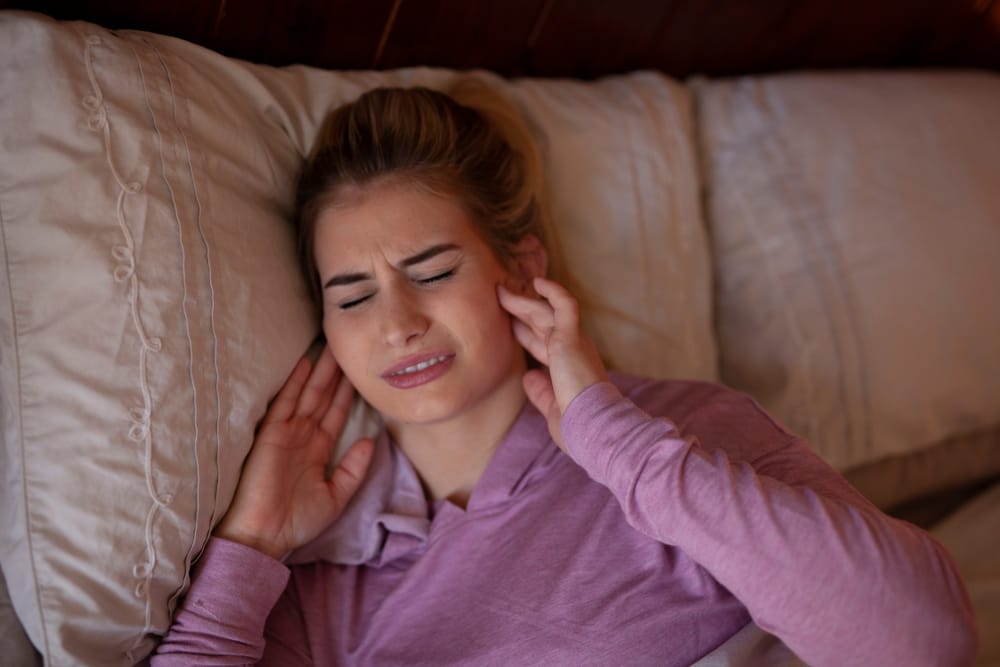Teeth grinding, also known as bruxism, is a common condition that affects many individuals. It involves the involuntary grinding or clenching of teeth, either during sleep or while awake. While occasional teeth grinding may not cause harm, chronic or severe cases can lead to various oral health issues. Understanding the causes of teeth grinding is crucial to effectively manage and prevent this condition.
This blog will delve into the causes of teeth grinding, the impact it has on oral health, how dentists diagnose bruxism, and the available treatments for managing this condition. Additionally, we will explore home remedies and lifestyle changes that can help alleviate teeth grinding. By gaining a deeper understanding of what causes teeth grinding, individuals can take proactive measures to protect their oral health and seek appropriate treatment when necessary.
The Basics of Bruxism: Understanding Teeth Grinding
Teeth grinding, or bruxism is a condition characterized by the grinding or clenching of teeth. It can occur during sleep or while awake, and individuals may be unaware that they are doing it. This repetitive motion can put excessive pressure on the teeth and jaw muscles, leading to various oral health problems. Understanding the basics of bruxism is essential in identifying the signs, causes, and potential treatment options for this condition.
Defining Bruxism and Its Types
Bruxism refers to the involuntary grinding or clenching of teeth, typically during sleep or while awake. It is a common condition that affects both adults and children. There are two types of bruxism: sleep bruxism and awake bruxism.
Sleep bruxism occurs during sleep and is considered a sleep-related movement disorder. People with sleep bruxism often grind or clench their teeth unknowingly and may experience symptoms such as jaw pain, facial pain, and headaches upon waking up. Awake bruxism, on the other hand, is an unconscious habit of clenching or tensing the jaw muscles while awake. This type of bruxism is often associated with stress or anxiety and may cause jaw discomfort and headaches throughout the day.
Understanding the different types of bruxism is essential in recognizing the signs and seeking appropriate treatment for this condition.
Recognizing the Signs of Teeth Grinding
Recognizing the signs of teeth grinding is crucial in identifying the condition and seeking appropriate treatment. While some individuals may be unaware that they grind their teeth, certain symptoms can indicate the presence of bruxism. These signs include:
- Jaw pain and stiffness
- Clicking, popping, or grinding noises when moving the jaw
- A dull headache
- Sensitive, loose, or broken teeth
- Worn teeth
- Broken or loose fillings
- Ear pain
- Facial pain
- Tension or discomfort in the jaw muscles
If you experience any of these symptoms, it is important to consult a healthcare provider or dentist for a proper diagnosis and treatment plan. They can evaluate the condition of your teeth and jaw and recommend appropriate measures to alleviate the symptoms and prevent further damage.
Unveiling the Causes: Why Do People Grind Their Teeth?
The causes of teeth grinding, or bruxism, can vary from person to person. While the exact cause may not always be apparent, there are several factors associated with this condition. Common causes of teeth grinding include:
- Psychological Factors: Stress and anxiety are major contributors to bruxism. Increased stress levels can lead to teeth grinding during sleep or while awake. Finding effective stress reduction techniques and practicing relaxation methods can help manage bruxism.
- Physical Triggers: An improper bite alignment or other dental issues can cause teeth grinding. Dental correction procedures may be necessary to alleviate bruxism in such cases.
By understanding the underlying causes of teeth grinding, individuals can take steps to prevent or manage this condition effectively.
Psychological Factors: Stress and Anxiety
Stress and anxiety are common psychological factors that contribute to teeth grinding. Increased stress levels can lead to muscle tension, including the jaw muscles, resulting in grinding or clenching of teeth. Individuals who experience high levels of stress or anxiety may be more prone to bruxism.
To reduce the risk of teeth grinding associated with stress, it is important to adopt stress reduction techniques. These include practicing relaxation methods such as deep breathing exercises, meditation, and mindfulness. Engaging in activities that promote relaxation and well-being, such as yoga or regular exercise, can also help alleviate stress and reduce the likelihood of teeth grinding.
Additionally, seeking support from mental health professionals or therapists can provide valuable strategies for managing stress and anxiety. Addressing underlying psychological factors can contribute to a healthier overall well-being and reduce the incidence of bruxism.
Physical Triggers: Alignment and Other Dental Issues
Physical triggers, such as improper bite alignment or other dental issues, can also contribute to teeth grinding. When the upper and lower teeth do not align properly, it can create an imbalance that leads to grinding or clenching of the teeth. Similarly, dental issues such as tooth enamel wear or irritation in the mouth can trigger bruxism.
In cases of misaligned bite or dental issues, seeking dental correction procedures may be necessary to alleviate teeth grinding. Orthodontic treatments, such as braces, nightguards, or other corrective measures, can help realign the bite and alleviate the pressure on the teeth and jaw muscles.
Maintaining good oral health, including regular dental check-ups and addressing any dental issues promptly, can also minimize the risk of teeth grinding caused by physical triggers. By addressing these factors, individuals can reduce the likelihood of bruxism and promote overall oral health.
The Impact of Teeth Grinding on Oral Health
Teeth grinding can have a significant impact on oral health. The constant grinding and clenching of teeth can lead to tooth damage, including enamel wear, tooth fractures, and loosening or loss of teeth. Excessive pressure on the jaw muscles and temporomandibular joint (TMJ) can cause jaw pain, stiffness, and clicking or popping noises. Bruxism can also result in gum inflammation or bleeding and damage to dental work such as fillings and crowns. In severe cases, bruxism can contribute to the development of temporomandibular joint disorders (TMD) and affect the overall function and appearance of the teeth and jaw.
Short-Term Effects: Sensitivity and Pain
Short-term effects of teeth grinding can include tooth sensitivity and pain. The constant grinding or clenching motion can wear down the tooth enamel, exposing the sensitive inner layers of the teeth. This can lead to increased tooth sensitivity, causing discomfort or pain when consuming hot or cold foods and beverages. Additionally, the excessive pressure on the teeth and jaw muscles can result in jaw pain and stiffness. Individuals with bruxism may also experience headaches or facial pain due to the strain on the jaw muscles and temporomandibular joint (TMJ). It is important to address these short-term effects of bruxism to prevent further damage to the teeth and jaw and alleviate any discomfort or pain associated with teeth grinding.
Long-Term Consequences: Tooth Damage and Jaw Disorders
In severe cases of bruxism or if left untreated, the long-term consequences of teeth grinding can be significant. The constant grinding and clenching motion can cause excessive wear and tear on the teeth, leading to tooth damage such as enamel wear, fractures, and even tooth loss. The pressure exerted on the jaw muscles and temporomandibular joint (TMJ) can also contribute to the development of temporomandibular joint disorders (TMD). TMD can cause chronic jaw pain, difficulty chewing, clicking or popping noises in the jaw joint, and limited jaw movement. Severe bruxism can even result in changes to the overall structure and appearance of the face. It is important to seek professional treatment to prevent or manage these long-term consequences of teeth grinding and maintain optimal oral health.
Diagnosing Bruxism: How Dentists Identify the Condition
Diagnosing bruxism involves a comprehensive evaluation by a healthcare provider, typically a dentist. The dentist will perform a dental exam, looking for signs of teeth grinding such as worn tooth enamel, flattened or chipped teeth, and signs of gum inflammation or bleeding. The dentist may also ask about symptoms and conduct a clinical evaluation to assess muscle activity and jaw function. In some cases, a sleep study may be recommended to monitor muscle activity and detect bruxism during sleep. This can help determine the severity and frequency of teeth grinding and guide the appropriate treatment approach for managing bruxism effectively.
Clinical Evaluation Techniques
During a dental visit, a healthcare provider may perform a clinical evaluation to assess the signs and symptoms of bruxism. This evaluation can involve observing the patient’s jaw movements, checking for jaw muscle tenderness or abnormalities, and assessing the range of jaw motion. The provider may also ask the patient about any pain or discomfort they experience related to their teeth or jaw. Additionally, the dentist may look for signs of tooth wear, such as flattened or chipped teeth, and examine the condition of dental work such as fillings and crowns. A thorough examination of the oral cavity can help identify the presence and severity of bruxism and guide the appropriate treatment options for managing the condition effectively.
Tools and Technologies Used in Diagnosis
In diagnosing bruxism, healthcare providers may utilize various tools and technologies to assess the condition accurately. One commonly used tool is a dental impression or mold, which is made by having the patient bite down on a soft material. This mold can help identify the presence of tooth wear, misalignment, or other signs of teeth grinding. In some cases, a healthcare provider may recommend the use of electromyography (EMG) to measure the electrical activity of the jaw muscles during sleep. This can help determine the frequency and intensity of teeth grinding episodes. Additionally, sleep studies may be conducted using specialized equipment to monitor muscle activity, breathing patterns, and other physiological parameters to assess sleep bruxism and its impact on overall sleep quality.
Professional Treatments for Managing Bruxism
There are various professional treatments available to manage bruxism effectively. One common approach is the use of custom mouthguards or mouth splints. These oral appliances are designed to be worn during sleep and provide a physical barrier between the upper and lower teeth, reducing the impact of grinding and clenching. Another treatment option is the use of botulinum toxin (Botox) injections, which can temporarily paralyze the muscles responsible for grinding. Corrective dental procedures, such as orthodontic treatment or bite alignment, may also be recommended in severe cases of bruxism. These treatments aim to address the underlying causes of bruxism and reduce the occurrence of teeth grinding.
Custom Mouthguards: Protection While You Sleep
Custom mouthguards, also known as occlusal splints, are commonly used to protect the teeth and jaw from the effects of teeth grinding during sleep. These oral appliances are custom-made to fit the individual’s teeth and provide a barrier between the upper and lower teeth. By evenly distributing the pressure across the jaw, mouthguards help to prevent excessive tooth wear, fractures, and damage to dental work. They also help to alleviate muscle tension in the jaw and reduce the strain on the temporomandibular joint (TMJ). Custom mouthguards are typically more comfortable and provide a better fit compared to over-the-counter versions. They are designed to be worn during sleep and can significantly reduce the impact of bruxism on oral health.
Corrective Dental Procedures: Aligning Your Bite
In cases where bruxism is caused by misaligned bite or dental issues, corrective dental procedures may be recommended to address the underlying causes and reduce the occurrence of teeth grinding. Orthodontic treatment, such as braces, can be used to align the teeth and improve the bite. This can help prevent excessive tooth wear and alleviate the strain on the jaw muscles and temporomandibular joint (TMJ). In severe cases of bruxism, corrective dental procedures such as dental crowns or bridges may be necessary to restore the damaged teeth and improve the overall function and appearance of the mouth. These procedures aim to correct any structural abnormalities and provide long-term relief from the effects of bruxism.
Beyond the Dentist’s Chair: Home Remedies and Lifestyle Changes
In addition to professional treatments, home remedies, and lifestyle changes can play a significant role in managing bruxism. Stress reduction techniques, such as practicing relaxation methods, meditation, or engaging in activities that promote overall well-being, can help reduce the frequency and intensity of teeth grinding. Good sleep hygiene, including maintaining a regular sleep schedule and creating a relaxing bedtime routine, can also contribute to better sleep quality and reduce bruxism episodes. Avoiding or reducing consumption of alcohol, caffeine, and recreational drugs can further minimize the risk of teeth grinding. Overall, adopting a healthy lifestyle, managing stress effectively, and prioritizing good sleep habits can complement professional treatments and improve the management of bruxism.
Stress Reduction Techniques
Managing stress is an important aspect of managing bruxism. Various stress reduction techniques can help individuals cope with stress and reduce the frequency and intensity of teeth grinding episodes. These techniques may include relaxation methods such as deep breathing exercises, mindfulness meditation, or engaging in activities that promote relaxation and overall well-being, such as yoga or tai chi. Stress management strategies such as identifying and addressing sources of stress, seeking support from loved ones or professionals, and creating a healthy work-life balance can also contribute to reducing stress levels and minimizing the impact of stress on oral health. By adopting stress reduction techniques, individuals can improve their overall well-being and reduce the occurrence of bruxism episodes.
Jaw Exercises and Relaxation Methods
Jaw exercises and relaxation methods can help alleviate the muscle tension and discomfort associated with bruxism. These exercises focus on stretching and strengthening the jaw muscles, promoting relaxation and flexibility. Some common jaw exercises include gentle jaw stretches, opening and closing the jaw slowly, and moving the jaw from side to side. Additionally, relaxation techniques such as applying warm compresses to the jaw muscles, practicing facial relaxation exercises, or using relaxation techniques such as guided imagery or progressive muscle relaxation can help reduce muscle tension and alleviate jaw pain. It is important to consult with a healthcare provider or dentist before starting any jaw exercises or relaxation methods to ensure proper technique and effectiveness in managing bruxism.
The Role of Diet and Nutrition in Preventing Teeth Grinding
Diet and nutrition can play a role in preventing teeth grinding and promoting overall oral health. Certain foods and beverages can exacerbate bruxism and increase the risk of teeth grinding episodes. It is recommended to avoid or limit the consumption of alcohol, caffeine, and recreational drugs, as these substances can contribute to teeth grinding. Additionally, maintaining a balanced diet rich in essential nutrients, vitamins, and minerals can support oral health and overall well-being. It may be beneficial to incorporate foods that are high in calcium, such as dairy products or leafy green vegetables, as calcium is essential for healthy teeth and jaw function. A well-balanced diet and proper nutrition can complement other treatment approaches in managing bruxism effectively.
Foods to Avoid and Why
Certain foods and beverages can contribute to teeth grinding episodes and should be avoided or limited to minimize the risk of bruxism. Alcohol consumption can increase the likelihood of teeth grinding by affecting the central nervous system and disrupting sleep patterns. Caffeine, found in coffee, tea, and some soft drinks, can stimulate the central nervous system and cause muscle tension, potentially leading to teeth grinding. Recreational drugs can also have similar effects on the central nervous system and increase the risk of bruxism. It is advisable to reduce or avoid the consumption of these substances to minimize the frequency and intensity of teeth grinding episodes. By making dietary choices that minimize the risk of bruxism, individuals can support their overall oral health and well-being.
Supplements That May Help
Certain supplements may have a positive impact on oral health and help manage bruxism. Some studies suggest that supplements such as vitamins and minerals can support overall health and potentially reduce the occurrence of teeth grinding episodes. For example, vitamins B and C, along with magnesium, are thought to play a role in maintaining muscle function and reducing muscle tension, which may help alleviate the symptoms of bruxism. It is important to note that supplements should be taken under the guidance of a healthcare provider and in conjunction with a balanced diet. Individual responses to supplements may vary, and it is essential to discuss their use and potential benefits with a healthcare professional before incorporating them into the management of bruxism.
Contact Creekside Family Dental Today
Teeth grinding, known as bruxism, can have detrimental effects on oral health. Stress and misaligned teeth are common triggers. Over time, this habit can lead to tooth damage and jaw disorders. Dentists diagnose bruxism through clinical evaluations and offer treatments like custom mouthguards. Home remedies like stress reduction techniques and jaw exercises can complement professional care. A balanced diet and nutrition can also play a role in preventing teeth grinding. Understanding the causes and seeking appropriate treatment is crucial in managing bruxism effectively and preserving oral health. contact us for help.
Frequently Asked Questions
Are there any age groups more prone to bruxism?
Age groups, sleep disorders, and hyperactivity disorder can contribute to an increased risk of bruxism. Children may be more prone to teeth grinding due to growing teeth, while adults may experience bruxism as a result of stress or underlying medical conditions. It is important to consult with a healthcare provider for accurate diagnosis and appropriate treatment options.
Can teeth grinding be cured?
Bruxism can be managed effectively, but a complete cure may not be possible in all cases. Treatment of bruxism focuses on reducing symptoms, preventing tooth damage, and addressing underlying causes. Professional treatments, home remedies, and lifestyle changes can help manage bruxism and alleviate its impact on oral health.


 Meet Dr. Leffler
Meet Dr. Leffler
 Meet the Team
Meet the Team
 Dental Membership Plan
Dental Membership Plan
 Insurance Information
Insurance Information
 Patient Forms
Patient Forms
 Online Bill Pay
Online Bill Pay
 Your First Visit
Your First Visit





